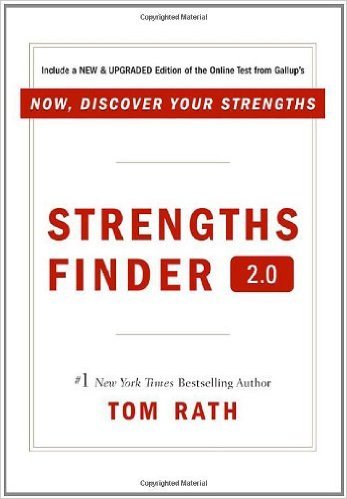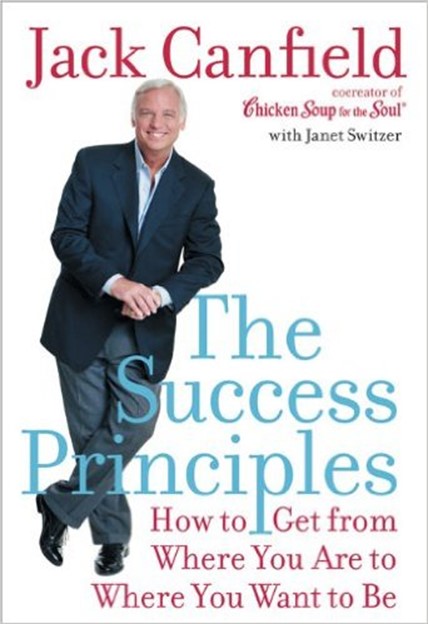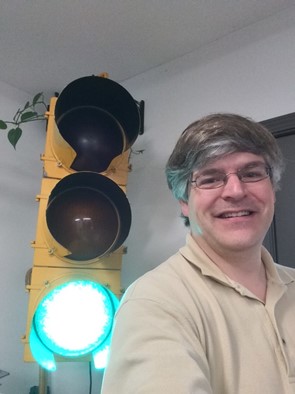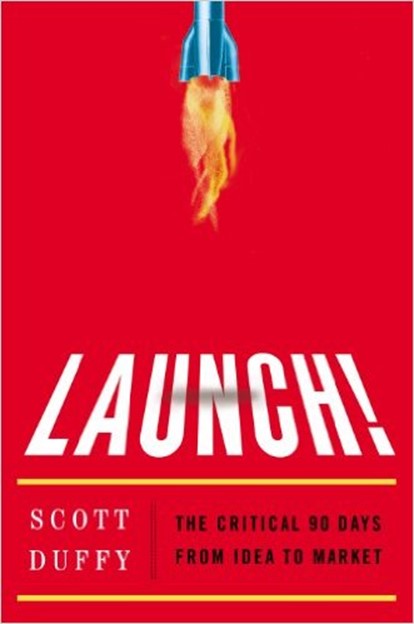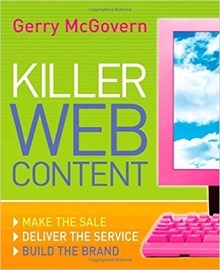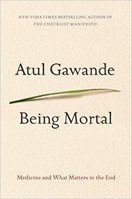
How to Be Yourself
I recently read Find Your Courage: 12 Acts for Becoming Fearless at Work and In Life. As I was writing the review I realized that it had gotten long – too long. Much like I had to do for the book Dialogue – I needed to break up the content into separate blog posts. So the information here is inspired by Find Your Courage – but represents so many connected thoughts that talking about it in the context of a single book review wouldn’t do it justice.
One of the great challenges in life is finding yourself – your true self. We spend so much time hiding ourselves from others that we often end up hiding from ourselves. In this post it’s my hope that you’ll discover a path to becoming your most authentic self. The heart of being ourselves is to build the courage to be real. It’s courage that allows us to act even though we’re fearful. In relationships this fear can surface as a lack of trust and a lack of vulnerability which ultimately leads to a lack of intimacy. (See Trust => Vulnerability => Intimacy for more about being yourself by trusting and by being vulnerable.) The first step in discovering ourselves is being honest – and that is a paradoxically difficult thing.
Paradox of Honesty
One of the paradoxes to life is that the more that you’re real the more that you make it possible for people to criticize you – the real you. When you’re fake or you’re not showing your real self, if someone criticizes you it is less impactful. After all, it’s not the real you that they’re criticizing. They’re criticizing some image that you’re projecting. If they don’t like it you can simply change the image that you project.
If you have a fixed mindset – that we’re unchanging – then if someone doesn’t like you there’s nothing that can be done. Luckily the book Mindset reminds us that we can change ourselves but that takes more work – more strength – than many people want to apply.
The truth is that many people are different people around different groups of people. These folks expect that they’re going to project some image – rather than letting someone see them for who they really are. After all they don’t like themselves so why would anyone else like them if they can see the real them.
Here is the deep seated and well-hidden truth. Our egos don’t like to let us know how frail they are and how much they ache and hurt from all of the things that have happened in our lives. Our inner critic knows everything we’ve ever done wrong and is happy to bring it up at a moment’s notice to prevent us from being hurt or doing something “bad” again. As we learned in Change or Die, the ego has powerful mechanisms it uses to keep us from even knowing how badly we see ourselves.
So if you can identify yourself being different people – projecting different images – when you’re with different groups of people the critical question is who are you really? Are you really the person that you become with your buddies drinking on a Saturday night making jokes and cutting up. Are you the person who serves in the church on Sunday mornings? Do you hide what you did on Saturday night from your Sunday morning friends? Do you hide your activity in the church from your buddies on Saturday night? Shouldn’t it be clear that you’re trying to appear to be what you aren’t if you’re hiding your behaviors from other groups?
All of the hiding, all of the projecting, and all of the remembering how you’re supposed to behave can be exhausting. You’re always trying to be something you’re not. Think about it this way. Hold a gallon of milk – it will weigh roughly 8-9 lbs. If you hold it on your side – next to who you are – it’s going to be heavy but not unmanageable. Now instead take the same gallon of milk and hold it straight out – as far from your body and your real you – as possible. For most folks holding a gallon of milk straight out to our side is an exhausting task – even for just a few minutes. That’s what it’s like to try to project an image to someone else that isn’t who you really are. You’re holding things – or people – away from the real you.
So the paradox of honesty is that being honest and allowing people to see the person that you really are takes courage. It takes allowing people to see the person that you really are and to accept that they may not like you – the real you. However, at the same time, by expressing who you really are you are creating an opportunity to save so much energy. You don’t have to worry about maintaining the projected reality.
Steven Reiss in Who Am I? shares the results of his research into the factors that motivate people. Trying to project an image is trying to hide what you really believe. What you believe and what you find important defines you. While allowing people to see your beliefs on important topics may be scary, it may also be required to live an authentic life.
Being Someone Else
Some of us have spent our whole lives projecting other images. We’ve spent our lives being someone else. The person we are is outgoing or compassionate or some other expectation that was leveled against us when we were young.
Whether you’re struggling to become the “good Christian man” or the “good Christian woman” and realizing that you’re falling short of the mark – because you’re not perfect – or you’re simply trying to fit into a cliché that your parents told you that “good boys don’t…” or “good girls don’t…” you’re living someone else’s life. The real tragedy is that the person whose life you’re trying to live isn’t real. It’s a fairy tale. It’s a bedtime story designed to make us feel good. No one is perfect. We’re all struggling to be the best we can be. It’s a tragedy that sometimes the best person we’re trying to be isn’t us.
The voices in your head that whisper “You should…” are the inner critic trying to get you to be that image of someone else so that you can be good enough to get your parents love, to be accepted by the cool kids, or to “fit in.” The problem is that it’s fool’s gold. It’s a false hope.
Your parents either did their job as parents in loving you for who you are or they didn’t. Projecting the good girl or good boy image won’t change their ability to love you – no matter how much you may desire that to be the case.
The groups that you’re in will either accept you – or they won’t. Mostly this is based on your ability to fit into their mold and their way of thinking. If you’re a free spirit who has original ideas you’ll find that they may not like you. However, that’s about them and their limiting beliefs – not about your value as a person no matter how much your ego may feel harmed by the experience.
The heart of being yourself is to be who you are no matter what the consequences – and to realize that just because a group doesn’t like you or love you doesn’t make you unlikable or unlovable. It means simply that these aren’t the right people for you.
Knowing Who You Are
Notwithstanding the high school assessment tests, most of us haven’t ever spent time trying to figure out who we really are. We moved from one stage of life to the next without really figuring out who we are. I don’t mean that we ask people who we are. I mean we sit reflecting on what we believe, what we want, and what we enjoy.

For those of us who became trapped in the image that someone else wanted for us it’s difficult to see beyond the projected images. We learned to be pliable and adaptable so that we could survive in many situations. We learned to not express our real desires or we might be reprimanded. We accepted others views that Lima beans were “Yuck!” instead of trying them for ourselves.
Over the years I’ve taken numerous assessments to figure out who I am. I’ve tried Disc, Myers-Briggs, Enneagram, Clifton Strengths Finder, Reiss’ assessments, a battery of Novation’s tests, and more. I’ve looked at other assessments as well. The funny thing is that none of the assessments that I’ve done have been able to describe who I am.
Another common path to finding yourself is quiet contemplation and reflection. In today’s always on, instant gratification, Microwave and Internet world, it’s hard to find time to just sit and reflect. For me, the reading that I do is that reflection time. It’s a way for me to evaluate myself from different points of view to try to see a clearer picture of myself.
So have I found the real me? Well, I feel comfortable in my skin. I know some of my likes and dislikes. I have a vision of the world I want to create. However, I still spend time taking assessments and reflecting on my world through the lenses of other authors. I don’t think I’ll ever fully understand who I am. However, I have a sense of peace that I know what some of my core beliefs are and I know what tenants of my existence I won’t violate.
At the same time, I look at things I want to change and get better at. Those are my areas for improvement. Places where my ideal self and my actual self aren’t in alignment. Those are areas where I am learning to change who I am.
Changing Who You Are
One of the benefits of projecting an image is that it’s obvious that a projected image is capable of changing. It’s obvious that if you’re projecting a false image that you can adjust it like adjusting a projector. What isn’t obvious is that we can change ourselves. Mindset discussed the power of believing that we’re not fixed. We’re capable of changing and growing. However, this conclusion isn’t obvious. It’s not obvious that it’s possible to change anything about myself – if I want to. If you’re convicted you can change your weight. If you’re passionate you can become an expert at anything. If you’re ready you can launch into a new career. Change is inherent to the human condition – but it’s not obvious. (Strengths Finders 2.0 questions whether we should change limitations or only focus on our strengths which accepting that we are malleable.)
The tricky part to changing yourself is the risk. The risk that you won’t succeed – but more importantly that you will succeed in changing and you won’t like the results. If you’ve made a change to who you are and you don’t like the result – what do you do then?
A more interesting questions is when should you change? If one person likes your hair the way it is and another likes it cut differently – how do you decide whether to change or not? First it’s important to acknowledge that the person may not like your hair another way. The perception is that they will – but until the change is made, no one will really know for sure. As was discussed in Stumbling on Happiness and The Happiness Hypothesis, we’re lousy at predicting how happy we’ll be.
Second, why should you change yourself for what someone else believes? What makes their judgement or perception any more correct than your own? Sometimes when your self-perception and self-image aren’t that great, you assume that others have you all figured out and that by changing to be the way that they want you to be it will be safer and better.
I can tell you that over the years I’ve met plenty of people – mostly women – who have changed to be what their boyfriend or spouse wanted them to be. They tried changing aspects of themselves – or at least aspects of their behavior – to fit someone else’s view. In my experience that rarely works. Most of the situations are ones where narcissistic and controlling people try to convert others into tools for helping them feel good about themselves. We’ve all heard of the trophy wives. Great for the guy but how does the woman feel about herself? How will she feel about herself when her looks fade as they always do?
On the converse side, I’ve been blessed to know some very gifted and altruistic people who seek to speak truth into my life. Sometimes I struggle to hear the truth and sometimes they’re wrong, however, they provide me with a valuable perspective that helps me to know how to grow and change. The trick to changing who you are – which is really possible – is understanding which people have your best interests at heart and those who have their own best interests at heart. It’s knowing that you can change – but that you shouldn’t always change.
Stable Core
I spoke about what the concept of stable Core is for me in my post The Inner Game of Dialog. I explained that it’s about having a stable set of principles. A fixed set of perspectives on things. I was on a vacation with the family when I started writing this post. We were visiting the light houses of the lower peninsula of Michigan. The important reflection that I’ve had on this trip is that the value of lighthouses is that they provide a way for you to determine where you are. That’s what a set of fixed principles do. They provide a way for you to measure where you are. The clearer that you are about your principles the clearer you can be about where you are – and where you’re going.

Henry Cloud and John Townsend in Beyond Boundaries talk about defining boundaries – the ones that separate one person from another but more importantly define who the person is. When someone violates that boundary they quite literally become another person. These are different than the temporary boundaries that we need for a time but that don’t necessarily define who we are.
For me, for instance, I say that “I will not run, I will not hide.” What this means to me is that I will not run from a problem or a fear. I won’t move away and hope it will go away. The other half, that I won’t hide, is that I won’t try to dodge, deflect, or avoid problems and consequences that come my way. For me this is a core part of who I am. If I fail to honor this idea I’ll become a different person.
Having fixed points means that while I may be shaken about my beliefs I’ll always return with a core happiness based on knowing that I know who I am – and that I live that out. I can tell you that my choice to not run or hide is a very hard road. There are many times when it would be easier to bow out of conflict and ignore it. There are many times when though I’m exhausted I know that I have to have a difficult conversation. (Perhaps Crucial Conversations.)
You Are Not What You do
One of the great paradoxes is that you must on the one hand be responsible for your actions, on the other hand you’re not what you do. That is to say that you have to be willing to take responsibility for what you do and what you’ve done but not be so debilitated by the shame and guilt so that you don’t move forward. (See Daring Greatly for more on the debilitating aspects of shame and guilt.) It’s taking responsibility for the results that you’ve caused – intentional or not. For instance, supporting a baby if you’ve had sex with your girlfriend and she gets pregnant.
It’s stepping up and trying when the situation isn’t perfect, because the situation is never perfect. Waiting for a perfect situation is cowardice not courage. It’s a decision to take no risk. It’s saying that I won’t do anything until the conditions are perfect for success. I don’t want to take the chance that my determination, skills, and talents aren’t enough to make an imperfect situation work.
Being Enough and Good Enough
Sometimes being courageous is hindered by the voice inside your head saying that you’re not enough. Even if you do the work. Even if you make the changes. Even if you are able to grow. You still won’t be enough. It’s safer to not try and not be enough than to try to grow and fail to be enough after you’ve given it your all. The funny thing is that this is a lie. The voice is lying to you. As I discovered in God Loves You, you’re always enough.
Sometimes the expression isn’t about being enough, it’s couched in the idea that we’re not good enough. We don’t deserve the love we receive because we’re not worthy of it. As a result we minimize, deflect, or outright ignore it. Our belief that we’re not good enough means that we can never do enough to be worthy. This persistent belief keeps us from living wholeheartedly. We can’t be our real selves because we’re filled with fear and self-doubt because we’re not perfect. Because we have human faults and desires we must somehow be less than other people. We don’t see that they’re just as frail and flawed as us. Somehow we’re a failure because we can’t be perfect.
Human Being
At the end of the day we’re all human beings. We have flaws. We have preferences. We have quirks. We have much to learn. Go out and learn who you are – not who others want you to be.

